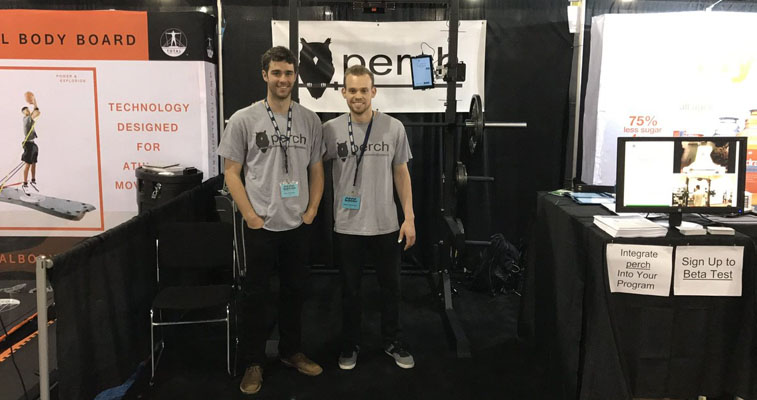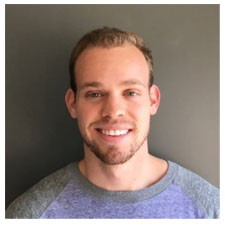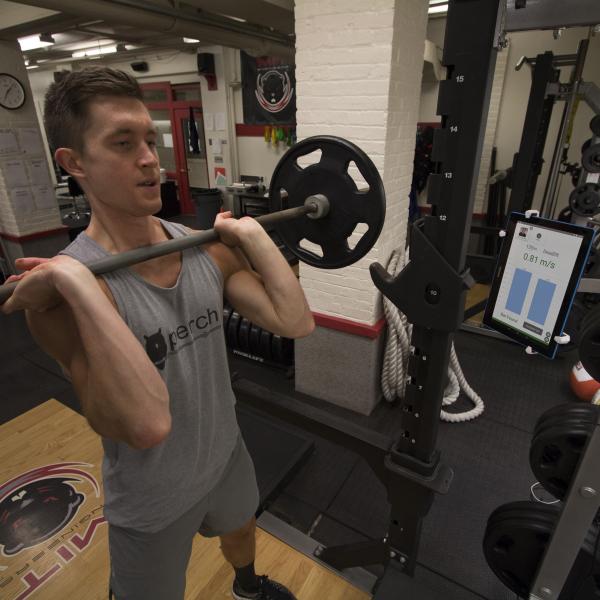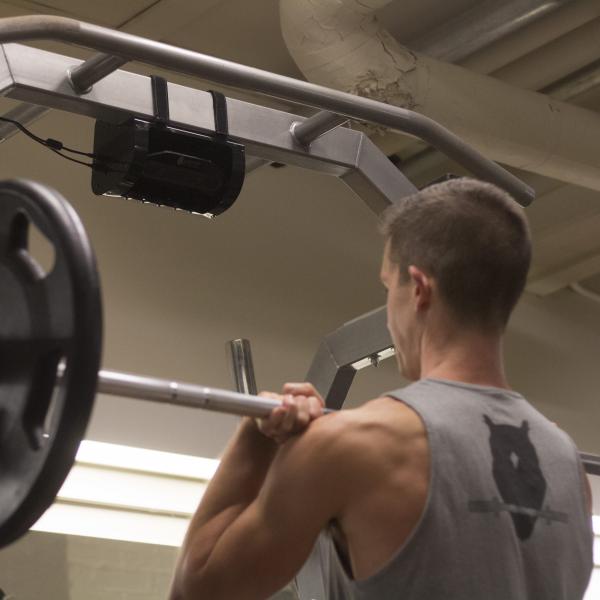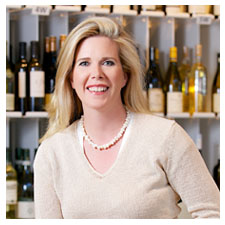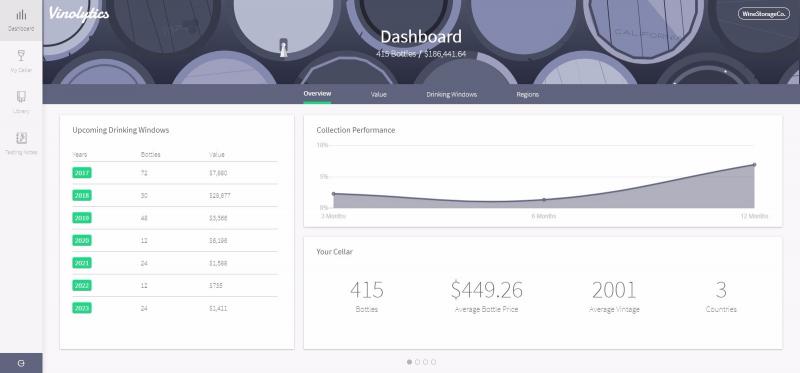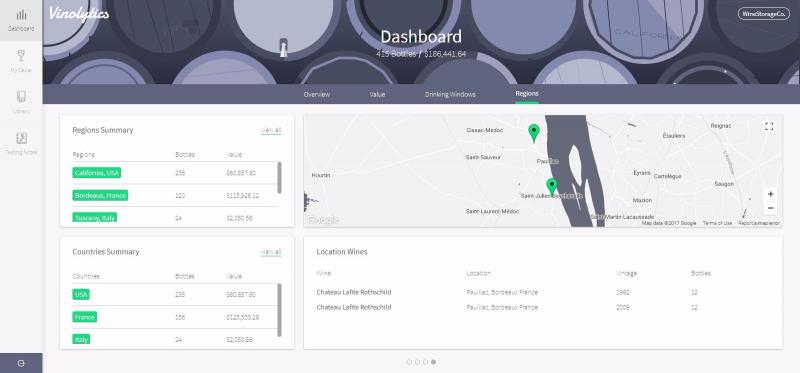Joshua Redstone is the founder of Equatine Labs, and a longtime techie who has worked overseas in Japan, on the West Coast with two major tech giants and is now back in his home state doing something completely different: trying to disrupt the measuring cup market.
“Throughout my career, I’ve always been involved with starting projects,” Redstone summarized. “I like learning new things and I like going in different directions.”
In the Early Days of the Internet, in the Small Town of Amherst...
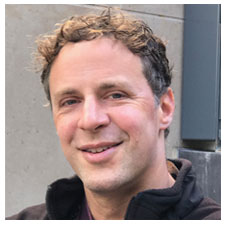
Growing up in the early 90s, Redstone became interested in technology after playing around with various home computers, such as the Apple IIe and a Radio Shack TRS-80 Model 4. He began learning early assembly language and wrote text-based video games for his own amusement. However, as his time spent with computers grew, he also learned – through tampering with internal hardware – to modify the machines.
“Back in the day, if you could get your computer to do ‘cool’ things, that was considered hacking,” Redstone remembers. “I actually a speech synthesizer into my computer and unintentionally managed to port in a local radio station.”
Redstone’s interest in computers and their inner workings carried on into college, where he attended Cornell University as a computer science major, and even had an internship with Microsoft his junior year. However, despite devoting much of his academic life to technology –and even being offered a software engineering position at Hewlett-Packard – he felt the need to step away from it.
“After I completed my undergrad, I became torn,” he said. “I still loved software and computers, but the thought of sitting at a desk in a cubicle for eight hours a day writing code did not seem appealing to me.”
Redstone took a sharp left turn into a different path: teaching English abroad in Japan. It proved to be a good decision in the short-term but quickly became repetitive to the Cornell alumnus. When he left the Land of the Rising Sun, Redstone was itching to get back into studying technology.
He decided to come back to the U.S. to study at the University of Washington. During this time, he gained extensive knowledge about computer architecture and distributing systems.
“Essentially, we were answering the question of ‘How do you get a whole bunch of computers to work together in a productive way?’”
Finding A Career in Silicon Valley
In 2003, Redstone received his Ph.D. in Computer Science and, shortly after, became a software engineer at a little company in Silicon Valley called Google.
Redstone spent six-and-a-half years at the tech giant, where he would take on and start a variety of internal projects. He primarily worked on data storage and helped scale Google File System to meet the ever-growing demands for storage capacity and reliability. Thanks to his knowledge of distributed systems, the project went smoothly and, based on this success, Redstone joined a team to help spearhead a machine learning project called Sibyl. The machine learning project enabled the search engine to make better predictions, which is an important capability to many Google services.
While being at Google proved to be a success for his career, Redstone began itching for something new. He wanted to try his hand within Silicon Valley’s startup scene.
“I tried doing the startup thing with a couple of friends out in California,” he said. “We wanted to create a platform that would help users with financial mathematics. Unfortunately, it only lasted a few months and we just couldn’t get the project off the ground.”
Redstone later joined Facebook in 2009. At this point of his career, he not only had more than a decade of academic knowledge but a ton of hands-on tech knowledge thanks to Google.
Around this time, Facebook began experimenting with location tagging. Nowadays, taking one glance at your own news feed, your Facebook friends are tagging themselves in whatever restaurant/bar/store they end up at. However, during Redstone’s time at the social media giant, location tagging was a feature they just started experimenting with.
“There were a lot of privacy concerns not only with users but also employees of Facebook,” he remembered. “Although through lots of discussions we ended up in I think a good spot."
Redstone was also responsible for maintaining IT infrastructure, where he would make sure lines of code weren’t missing, and if they were written correctly.
From Software Engineering to Measuring Cups?

After 10 years spent with Silicon Valley companies, Redstone decided to take a hiatus and move back to Cambridge, and he experienced a bit of a culture shock.
“I’ve always seen Cambridge and Silicon Valley as ‘academic versus entrepreneurial,’” he said. “There’s always been more of a focus on schools like MIT and Harvard. The entrepreneurial community is much more pervasive in Silicon Valley, and there are more outliers to help startups. However, Cambridge has those features – it’s just smaller.”
Nowadays, Redstone spends his time working on his company, Equatine Labs. The company is developing something, well, completely different. He has created a measuring cup that utilizes applied mathematics to give the user a perfect measurement.
As someone who enjoys baking as a hobby, Redstone noticed how certain recipes would require specific small measurements. After doing some research in finding if there is a measuring cup for these kinds of situations, he found there wasn’t a market for it.
Off to the drawing board he went, and Redstone started creating prototypes of measuring cups. While in this somewhat primitive development phase, the Silicon Valley veteran had the idea to start a business again.
“I’ve noticed there are a lot of ‘me too’ companies. I didn’t want to be an entrepreneur who had just another app,” said Redstone. “I also didn’t want to be different and weird for the sake of being different and weird.”
Equatine Labs’ Euclid cup appears to look like a creatively-designed measuring cup. He had written and developed the software to assist in getting the design down. The result is the first cup on the market to take sophisticated mathematics into account.
Today, Equatine Labs’ Euclid cup is up on Kickstarter. While he is using baking and cooking as a primary launching point, Redstone believes the cup can be used in any industry where measuring volume is key, such as a chemistry lab.
Armed with optimism and several other ideas, Redstone believes his company, and his expansive skill set can be used to create other products and services.
“I’m open to implementing more of my ideas under the Equatine name,” Redstone says with a smile. “We’ll see where this cup goes.”
Colin Barry is a contributor to VentureFizz. Follow him on Twitter @ColinKrash.



